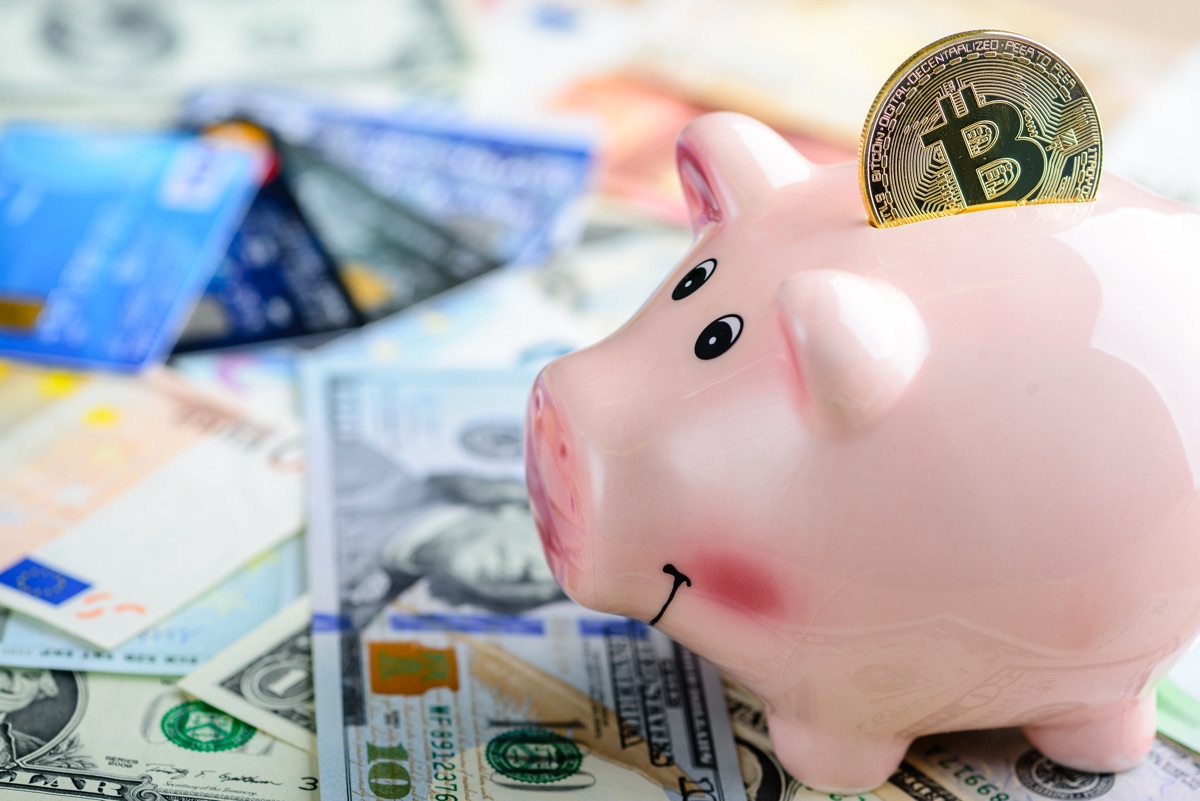Did You Buy Bitcoins? Your Brain's Anatomy Might Be to Blame

Joseph Kable, a professor at the University of Pennsylvania, offered a simple choice: Either walk out of his lab with 20 bucks for sure or start rolling dice for a shot at far fatter prizes, like a 40 percent chance to win $80.
Many economists would say making this kind of decision depends on how much risk a person is willing to endure—in other words, on personality.
But Kable is not an economist or psychologist. He's a neuroscientist, and he is betting the material structure of your brain largely determines how you approach such decisions. In a study he and his co-authors published Thursday in Neuron, he found three physical brain features help predict a person's appetite for risk.
Related: What is Bitcoin?
A total of 108 people ages 18 to 35 played Kable's game for the study. Participants were given 120 scenarios in which they had to decide between a guaranteed $20 payoff and a gamble for bigger cash prizes, with varying degrees of risk. "So [it was] either the $20 for sure versus a 50 percent chance for $40 or a 70 percent chance for $30 or a 10 percent chance for $90," Kable says. The participants were paid based on their choices in just one of these scenarios, but they did not know which one — so they had to play all 120 as if they were real. By looking at how people decided across all the scenarios, Kable scored each individual's tolerance for risk.
Separately, the researchers had the same participants sit quietly through a few different types of brain scans (without being asked to think about anything in particular). MRI scans revealed the size of each subject's amygdala, a brain region thought to process fear and other emotions. Another MRI reading measured the baseline level of activity in the amygdala and in the brain's medial prefrontal cortex, an area considered a nexus for decision-making. A third scan, using a technique called diffusion tensor imaging, revealed anatomical connections that are made of nerve fibers and link the amygdala and medial prefrontal cortex, acting like neurological highways for information between the two.
Kable and his team found the people who chose to take the biggest gambles tended to have larger amygdalae, with fewer connections to the medial prefrontal cortex. But despite having fewer links, the activity of these two regions seemed more coordinated — a measure called functional connectivity — among those who preferred to take their chances, compared with those who would rather play it safe.
Get the world’s most fascinating discoveries delivered straight to your inbox.
The results are impressive, if a little hard to decipher, according to Ifat Levy, a neuroscientist at the Yale University School of Medicine who did not work on the new study. Kable and his colleagues' use of different types of scans provides a far more detailed picture of the interplay between brain anatomy and risk than does earlier research, Levy says. "[In our work] we used only one of these techniques out of the three here," she adds. Levy's research found a connection between risk preferences and the quantity of neurons in a different part of the brain (called the posterior parietal cortex), but not the amygdala or medial prefrontal cortex. "So [the new study is] a fuller picture of the anatomy and function of the brain in relationship to risk-taking," she says.
Still, fully interpreting that picture—and explaining the links Kable has noted between brain anatomy and risk—is dicey. How is it that riskier individuals have fewer anatomical connections linking the amygdala to the medial prefrontal cortex, but more apparent cooperation between these regions? "I could really only speculate, especially because the results are quite complex," Levy says. "Maybe it's a pruning, or getting rid of, unnecessary connections—leaving just the ones that are needed—and then the functional connectivity actually gets stronger."
Perhaps the greater functional connectivity means the rational, calculating medial prefrontal cortex dominates the more emotional, instinctual amygdala in such individuals, Kable says. "It [the cortex] has access to information that the amygdala does not," he notes. With this decision-making part of the brain leading the calculation, maybe risk-takers can factor in different probabilities or feel less apprehension around their choices.
What accounts for these anatomical variations in the first place is yet another mystery, Kable says. Perhaps people's brains are just simply innately different. Or it could be life experiences have led their brains to develop differently. "Someone's socioeconomic status, their degree of mathematical literacy, the extent to which someone has experienced financial need—those are factors that do affect features of the brain," he says; these influences, which would presumably make a difference in how willing someone is to gamble with their money, might also be sculpting their brain in one way or another.
It will take time to sort these factors out—but doing so could especially be a boon for economists, says Agniesizka Tymula, a neuroeconomist at the University of Sydney who was not involved with the new research. "The study is fascinating because it helps to uncover what about the brain's structure makes people take more or less risk. [With that] you could write economic models based on biological variables, and make the models much more powerful."
This article was first published at ScientificAmerican.com. © ScientificAmerican.com. All rights reserved. Follow Scientific American on Twitter @SciAm and @SciamBlogs. Visit ScientificAmerican.com for the latest in science, health and technology news.



